40 Best Colleges for Nutrition – 2024
April 28, 2024

With a growing emphasis in the healthcare field on preventative care and wellness, nutrition majors are primed to make major societal contributions. And, oh yeah, jobs will be plentiful as hospitals, nursing homes, and outpatient care centers are expected to hire a new wave of dietitians and nutritionists in the coming decade. Some students also look to this area of study as a precursor to medical school or an advanced degree in another healthcare field. You’ll note as you review our list of the Best Colleges for Nutrition that many of the schools tend to be larger universities as many smaller schools do not offer nutrition as a major.
During your four years of study, you’ll take courses such as Human Anatomy, Nutrition Throughout the Lifecycle, Principles of Food Selection & Preparation, Nutrition and Culture, and Basic Biological Science.
Methodology
Click here to read our methodology for the Best Colleges for Nutrition.
Best Colleges for Nutrition
Here’s a quick preview of the first ten nutrition institutions that made our list. Detailed profiles and stats can be found when you scroll below:
1) New York University
2) University of North Carolina at Chapel Hill
3) Cornell University
4) University of California-Davis
5) Case Western Reserve University
6) Boston University
7) University of Texas at Austin
8) University of Florida
9) University of Georgia
10) University of Illinois at Urbana-Champaign
All of the schools profiled below have stellar reputations in the area of nutrition and commit substantial resources to undergraduate education. For each of the best nutrition colleges, College Transitions will provide you with—when available—the university’s:
We will also include a longer write-up of each college’s:
- Academic Highlights – Includes facts like student-to-faculty ratio, average class size, number of majors offered, and most popular majors.
- Professional Outcomes – Includes info on the rate of positive outcomes, companies employing alumni, and graduate school acceptances.

New York University
- New York, NY
Academic Highlights: NYU is divided into a number of smaller (but still quite large) colleges organized by discipline; in sum, there are 230 areas of undergraduate study across nine schools and colleges. For its size, a commendable 58% of classes have an enrollment under 20 students. While all schools within NYU have solid reputations, Stern holds the distinction as one of the top undergraduate business programs in the country. For those entering film, dance, drama, or other performing arts, Tisch is as prestigious a place as you can find to study.
Professional Outcomes: Within six months of exiting, 94% of Class of 2022 grads had landed at their next destination, with 78% employed and 21% in graduate school. The top industries for employment were healthcare (11%), internet and software (9%), finance (8%), and entertainment (8%). Large numbers of alumni can be found at Google, Deloitte, Morgan Stanley, Goldman Sachs, IBM, JP Morgan Chase, Citi, and Amazon. The mean starting salary is $75,336. In 2022, business, arts and sciences, and law school were the most popular grad school destinations.
- Enrollment: 29,401 (undergraduate); 29,711 (graduate)
- Cost of Attendance: $90,222-$96,172
- Median SAT: 1520
- Median ACT: 34
- Acceptance Rate: 12%
- Retention Rate: 95%
- Graduation Rate: 87%

University of North Carolina at Chapel Hill
- Chapel Hill, NC
Academic Highlights: Undergraduates can choose from 74 bachelor’s degree programs in a number of schools and colleges, the largest of which is the College of Arts & Sciences. 44% of classes have a student enrollment under 20. The social sciences (15%), biology (12%), media/journalism (9%), computer science (8%), and business (6%) are the areas in which the most degrees are conferred. The Kenan-Flager Business School is internationally renowned and requires separate admission. Other strong programs include those in chemistry, journalism, psychology, and political science.
Professional Outcomes: Six months after leaving Chapel Hill, 97% of 2022 grads had entered employment, military service, or graduate school. Among the for-profit companies that hire the most graduates are Wells Fargo, IBM, Cisco, Deloitte, EY, Google, Microsoft, Amazon, Oracle, McKinsey & Company, and Goldman Sachs. In the nonprofit sector, a large number of alumni are employed by AmeriCorps, NIH, Teach for America, and the Peace Corps. The average starting salary is $70,619. 18% of 2022 grads enrolled directly in graduate/professional school.
- Enrollment: 20,210 (undergraduate); 11,739 (graduate)
- Cost of Attendance: $27,036 (in-state); $60,040 (out-of-state)
- Median SAT: 1450
- Median ACT: 32
- Acceptance Rate: 17%
- Retention Rate: 96%
- Graduation Rate: 91%
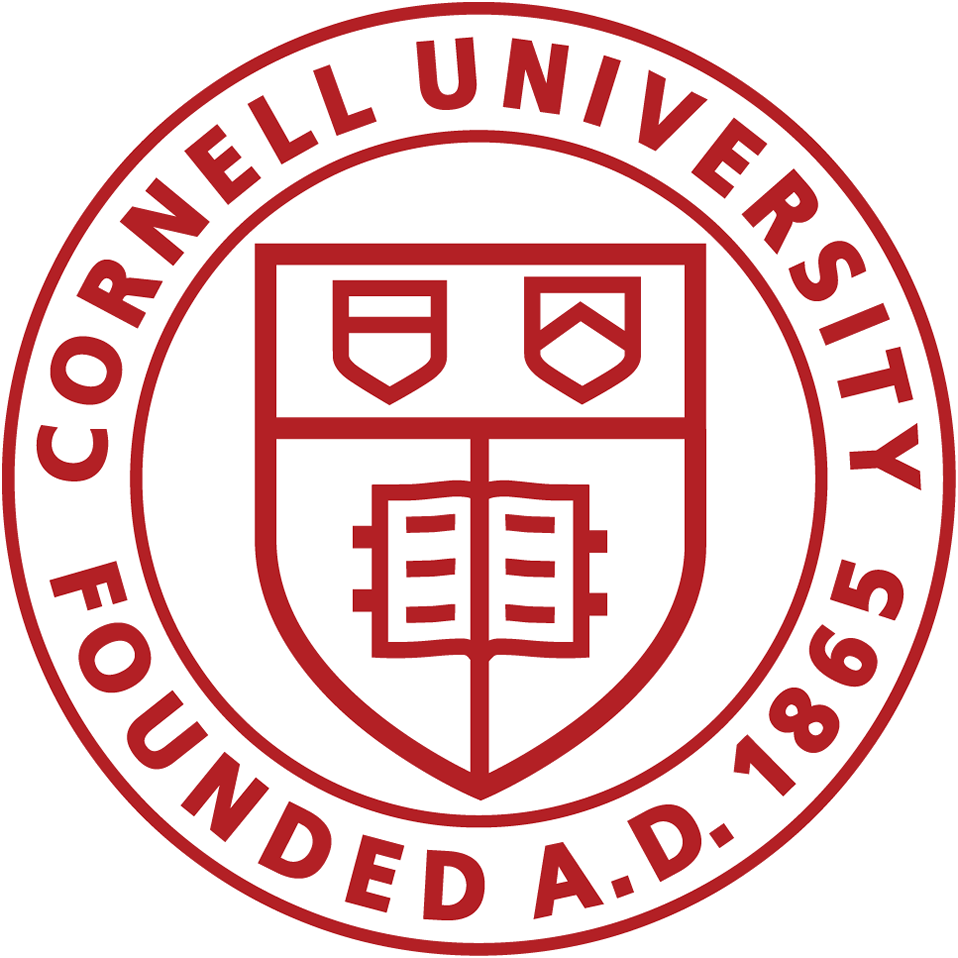
Cornell University
- Ithaca, NY
Academic Highlights: A diverse array of academic programs includes 80 majors and 120 minors spread across the university’s seven schools/colleges. Classes are a bit larger at Cornell than at many other elite institutions. Still, 55% of sections have fewer than 20 students. Most degrees conferred in 2022 were in computer science (17%), engineering (13%), business (13%), and biology (13%). The SC Johnson College of Business houses two undergraduate schools, both of which have phenomenal reputations.
Professional Outcomes: Breaking down the graduates of the College of Arts and Sciences, the largest school at Cornell, 68% entered the workforce, 28% entered graduate school, 1% pursued other endeavors such as travel or volunteer work, and the remaining 3% were still seeking employment six months after receiving their diplomas. The top sectors attracting campus-wide graduateswere financial services (18%), technology (17%), consulting (15%), and education (10%). Of the students from A&S going on to graduate school, 15% were pursuing JDs, 5% MDs, and 22% PhDs.
- Enrollment: 15,735
- Cost of Attendance: $88,150
- Median SAT: 1520
- Median ACT: 34
- Acceptance Rate: 7%
- Retention Rate: 97%
- Graduation Rate: 95%

University of California, Davis
- Davis, CA
Academic Highlights: UC Davis offers 100+ undergraduate majors across four schools: the College of Agricultural and Environmental Sciences, the College of Biological Sciences, the College of Engineering, and the College of Letters and Science. 50% engage in some type of research/creative project outside the classroom. The areas of study with the largest number of degrees awarded were biology, the social sciences, psychology, and engineering. Programs in engineering, computer science, and animal science are nationally renowned.
Professional Outcomes: Many recent grads found homes at Silicon Valley or other California-based employers. Corporations employing 200 or more Aggies include Genentech, Google, Apple, Cisco, Meta, Oracle, Amazon, Microsoft, Salesforce, and LinkedIn. Ten years out of school, median earnings rise to $112k. Within one year of graduating, 39% of Aggies elect to continue their education; the most popular degrees pursued are master’s, MDs or other health doctorates, law, and MBA/MPA.
- Enrollment: 31,797 (undergraduate); 9,053 (graduate)
- Cost of Attendance: $41,389 (in-state); $73,963 (out-of-state)
- Median SAT: Test Blind
- Median ACT: Test Blind
- Acceptance Rate: 42%
- Retention Rate: 93%
- Graduation Rate: 87%
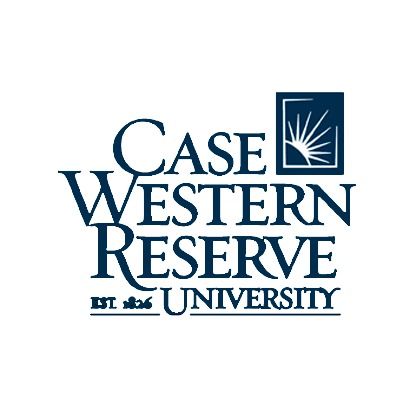
Case Western Reserve University
- Cleveland, OH
Academic Highlights: Sporting a 9:1 faculty-to-student ratio, the university does a nice job keeping classes on the small side, with 50% of course sections capped at nineteen and only 13% of courses having fifty students or more. The Weatherhead School of Management and the Case School of Engineering have stellar reputations within the worlds of employment and academia. Engineering is the most commonly conferred undergraduate degree at 27% followed by biology (15%), computer science (10%), and health professions (8%).
Professional Outcomes: Fifty-six percent of 2022 CWRU graduates head into the world of professional employment upon receiving their diplomas; only 3% were still looking for work six months after leaving the university. More than half of the Class of 2022 enjoyed a starting salary of at least $65,000. The employers of the greatest number of graduates included Accenture, Microsoft, Deloitte, and Google. In 2022, four or more grads were accepted to continue their studies at the likes of NYU, Columbia University, Johns Hopkins University, WashU, and the University of Michigan.
- Enrollment: 6,017
- Cost of Attendance: $88,516
- Median SAT: 1480
- Median ACT: 33
- Acceptance Rate: 27%
- Retention Rate: 93%
- Graduation Rate: 86%

Boston University
- Boston, MA
Academic Highlights: In total, the university offers more than 300 programs of study, 100+ of which are distinct undergraduate degrees spread across ten schools/colleges. Many classes at BU are reasonably small—60% contain fewer than twenty students; only 19% contain more than forty. The student-to-faculty ratio is 11:1. The greatest number of degrees are conferred in social sciences (16%), business/marketing (15%), communications and journalism (15%), biology (11%), engineering (9%), and health professions/related sciences (7%).
Professional Outcomes: Six months after graduation, 90% of BU grads have found their way into the world of employment or full-time graduate study. Across all graduating years, companies employing more than 350 BU alums include Google, Oracle, Accenture, IBM, and Amazon Web Services. Of the one-quarter of grads who move directly into graduate school, many are welcomed onto the campuses of elite graduate programs. For example, engineering students found new academic homes at MIT, Stanford, Carnegie Mellon, and Columbia.
- Enrollment: 18,459
- Cost of Attendance: $86,363
- Median SAT: 1430
- Median ACT: 32
- Acceptance Rate: 14%
- Retention Rate: 94%
- Graduation Rate: 89%

The University of Texas at Austin
- Austin, TX
Academic Highlights: UT Austin offers over 150 majors, including those at the Cockrell School of Engineering, one of the most heralded undergraduate engineering schools around, and The McCombs School of Business, which dominates in the specialty areas of accounting and marketing. The computer science department is also top-ranked. In terms of degrees conferred, engineering is tied with biology (12%) followed by communication (11%), business (11%), and the social sciences (8%). The elite Plan II Honors Program is one of the best in the country.
Professional Outcomes: Within the College of Liberal Arts, six months after graduating, 68% of Longhorns are employed and 24% have entered graduate school. The for-profit sector attracts 65% of those employed while 19% enter public sector employment and 16% pursue jobs at a nonprofit. Major corporations that employ more than 500 UT Austin grads include Google, Meta, Oracle, Microsoft, IBM, and Apple. Engineering majors took home a median income of $79k and business majors took home $70k.
- Enrollment: 41,309 (undergraduate); 11,075 (graduate)
- Cost of Attendance: $30,752-$34,174 (in-state); $61,180-$69,310 (out-of-state)
- Median SAT: 1430
- Median ACT: 32
- Acceptance Rate: 31%
- Retention Rate: 95%
- Graduation Rate: 88%
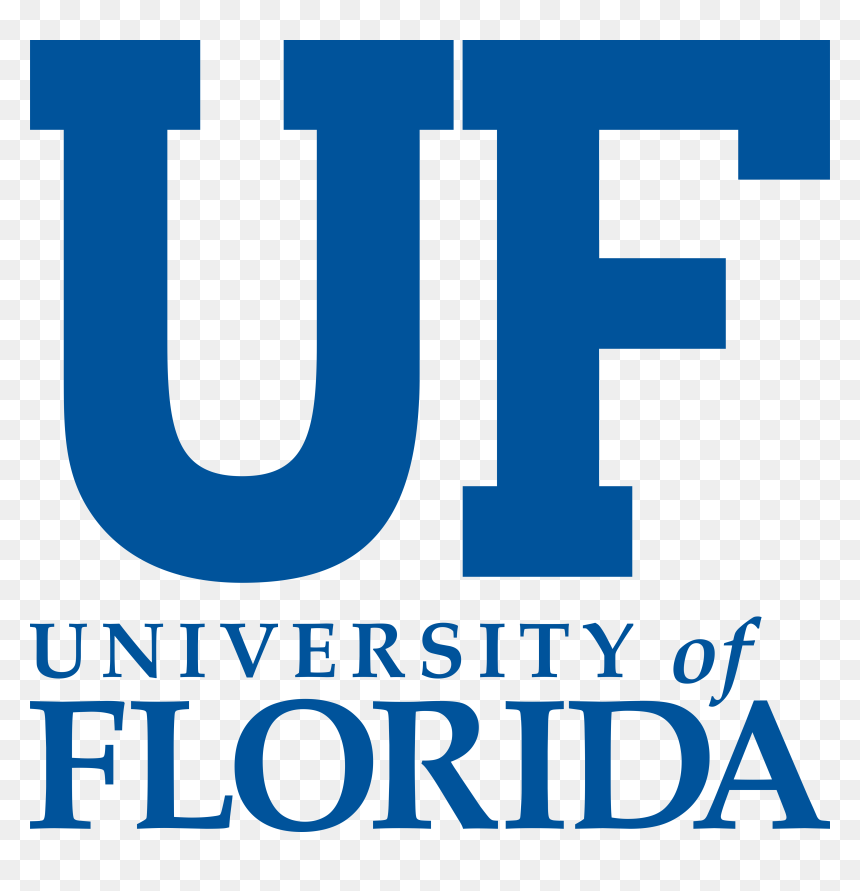
University of Florida
- Gainesville, FL
Academic Highlights: With 16 colleges and 100 undergraduate majors to choose from, educational experiences are exceptionally diverse. The Warrington College of Business and the Wertheim College of Engineering are highly respected, so it’s no surprise that those two programs confer the greatest percentage of degrees—12% and 14%, respectively. Biology (11%), the social sciences (11%), and health professions (8%) are next in popularity. 53% of sections enroll fewer than 20 students, and 33% of students partake in an undergraduate research experience.
Professional Outcomes: By graduation day, 66% of the Class of 2022 had already procured a first job. The top occupational areas were engineering (13%), health care (13%), computer science (5%), and marketing (4%). 200+ Gator alumni can be found at top corporations like Google, EY, Raymond James, Deloitte, Apple, Amazon, Microsoft, Oracle, and PwC. The average salary for all 2022 grads was $69k, with a high of $100k for computer science majors. Of those pursuing advanced degrees, a master’s degree was the most popular pursuit (63%) followed by law school (11%).
- Enrollment: 34,552 (undergraduate); 20,659 (graduate)
- Cost of Attendance: $23,530 (in-state); $45,808 (out-of-state)
- Median SAT: 1400
- Median ACT: 31
- Acceptance Rate: 23%
- Retention Rate: 97%
- Graduation Rate: 90%
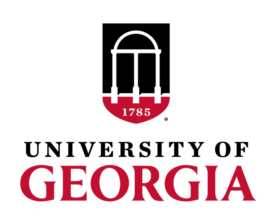
University of Georgia
- Athens, GA
Academic Highlights: UGA boasts seventeen distinct colleges and schools that offer 125+ majors. Business is the most commonly conferred undergrad degree, accounting for 29% of diplomas earned. It is followed by biology (10%), social sciences (8%), communication & journalism (8%), and psychology (7%). Top-ranked programs include animal science, business, communications, and public and international affairs. 49% of sections enroll fewer than 20 students, and no matter your major, UGA encourages you to conduct research with a member of the school’s faculty.
Professional Outcomes: 96% of the Class of 2022 was employed or continuing their education six months after graduation. Popular employers include Accenture, PricewaterhouseCoopers, the Walt Disney Company, and Deloitte. Salaries vary between colleges; engineering grads had a median starting salary of $65k while journalism and communication grads reported a $50k median. In 2022, 24% of graduates enrolled directly into a graduate/professional degree program, with the most commonly attended schools including Columbia, Duke, Emory, Georgia Tech, Penn, and UVA.
- Enrollment: 30,714 (undergraduate); 9,893 (graduate)
- Cost of Attendance: $28,142 (in-state); $48,538 (out-of-state)
- Median SAT: 1310
- Median ACT: 29
- Acceptance Rate: 43%
- Retention Rate: 94%
- Graduation Rate: 88%

University of Illinois at Urbana-Champaign
- Champaign-Urbana, IL
Academic Highlights: Eight of UIUC’s fifteen schools cater to undergraduate students. There are 150 academic programs offered, including those at the acclaimed Grainger College of Engineering and Gies College of Business. In sheer volume of degrees conferred, engineering and business/marketing are tied at 19%, followed by the social sciences (9%) and psychology (6%). 39% of sections are capped at 19 students. 29% of undergraduates work with a faculty member on a research project; another 22% have some type of fieldwork, practicum, or clinical experience.
Professional Outcomes: 95% of the members of the Class of 2022 landed at their next destination within six months of graduation, with 38% matriculating directly into an advanced degree program. 57% were employed full-time; the most popular sectors were finance, consulting, healthcare, electronics, and education. Corporations landing the most recent Illini grads were KPMG, Deloitte, Epic Systems, EY, PwC, and Amazon. The average salary across all Class of 2022 majors was an extremely solid $75,000.
- Enrollment: 35,120 (undergraduate); 21,796 (graduate)
- Cost of Attendance: $35,926-$41,190 (in-state); $55,386-$63,290 (out-of-state)
- Median SAT: 1440
- Median ACT: 32
- Acceptance Rate: 79%
- Retention Rate: 93%
- Graduation Rate: 85%
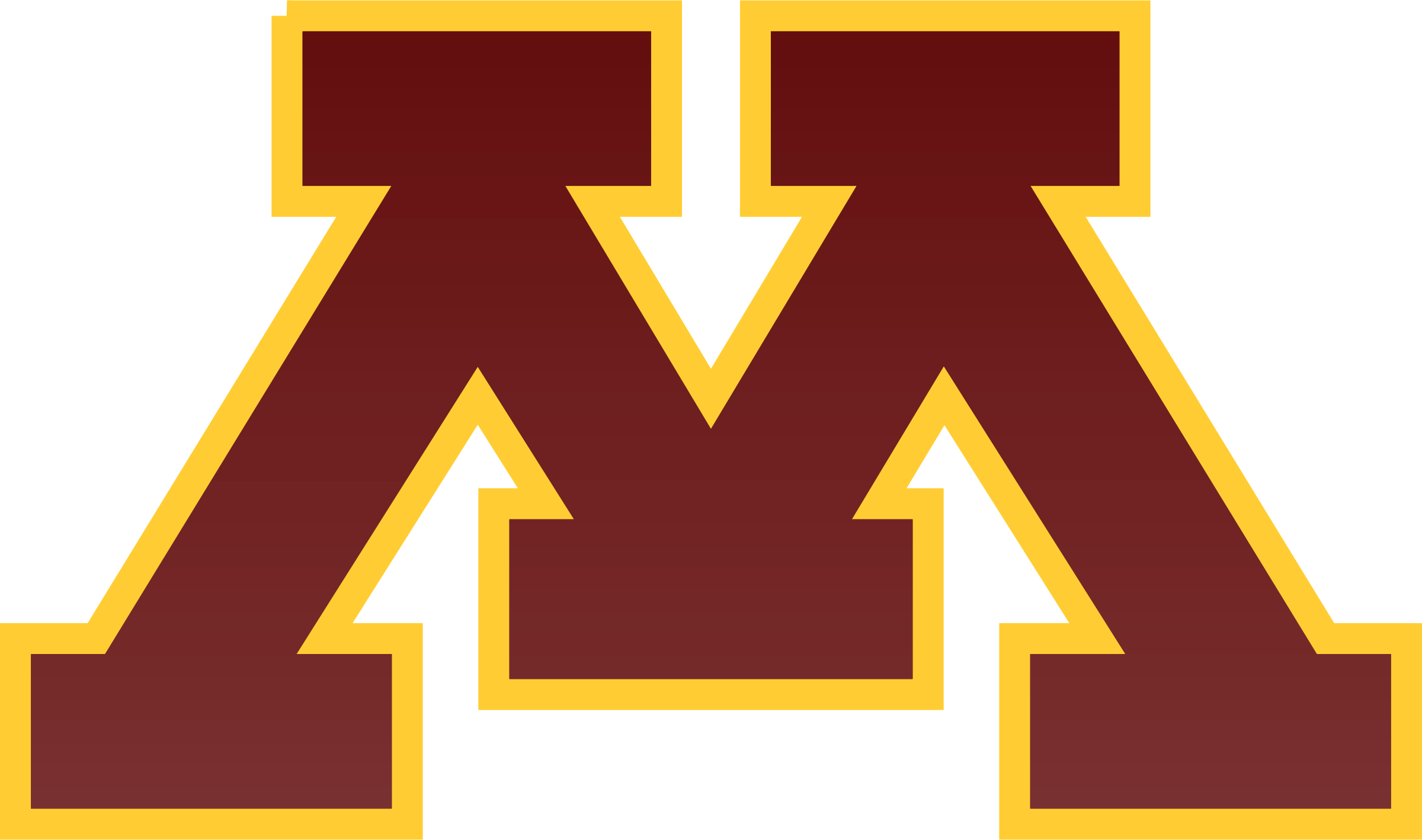
University of Minnesota–Twin Cities
- Minneapolis, MN
Academic Highlights: There are 150 majors available across eight freshman-admitting undergraduate colleges. 65% of class sections enroll 29 or fewer students. The most commonly conferred degrees are in biology (13%), business & marketing (11%), engineering (10%), the social sciences (10%), computer science (9%), and psychology (8%). The College of Science and Engineering and the Carlson School of Management have strong national reputations, and the chemistry, economics, psychology, and political science departments are also well-regarded.
Professional Outcomes: The top seven companies snatching up the largest number of recent grads are all companies headquartered in the state of Minnesota: Medtronic, Target, 3M, United Health Group, US Bank, and Cargill. Google, Apple, and Meta all employ hundreds of Twin Cities alumni. The mean starting salary for recent grads was $50k. With 130 graduate programs in science, art, engineering, agriculture, medicine, and the humanities, the University of Minnesota retains many of its graduates as they pursue their next degrees.
- Enrollment: 39,248 (undergraduate); 15,707 (graduate)
- Cost of Attendance: $33,032-$35,632 (in-state); $54,446-$57,046
- Median SAT: 1370
- Median ACT: 29
- Acceptance Rate: 75%
- Retention Rate: 90%
- Graduation Rate: 84%

University of Washington – Seattle
- Seattle, WA
Academic Highlights: 180+ undergraduate majors are offered across thirteen colleges/schools. Personal connections with professors abound as 55% of grads complete a faculty-mentored research project. The College of Engineering, which includes the College of Computer Science & Engineering, is one of the best in the nation; UW also boasts strong programs in everything from business to social work to environmental science. The most popular degrees are the social sciences (13%), biology (12%), computer science (11%), and business (8%).
Professional Outcomes: Within months of graduation, 73% of Class of 2022 grads were employed and 17% were continuing their education. The most popular employers of the Class of 2022 included Google, Amazon, Microsoft, Boeing, and KPMG. Across all living alumni, 6,000+ work for Microsoft, and 4000+ work for each of Boeing and Amazon. Of those headed to graduate/professional school, just over half remain in state, mostly at UW itself. Large numbers of 2022 grads also headed to Columbia, Johns Hopkins, and USC.
- Enrollment: 36,872 (undergraduate); 16,211 (graduate)
- Cost of Attendance: $34,554 (in-state); $63,906 (out-of-state)
- Median SAT: 1420
- Median ACT: 32
- Acceptance Rate: 48%
- Retention Rate: 94%
- Graduation Rate: 84%

North Carolina State University
- Raleigh, NC
Academic Highlights: NC State offers more than 100 majors and 120 minors. 64% of sections enroll 29 or fewer students. Engineering is the most popular area of concentration as 24% of Class of 2022 graduates earned a degree in that field. Business/marketing comes in second at 17% followed by biology (10%) and agriculture (7%). NC State has an exceptional regional reputation and an expanding national one with the College of Engineering near the top of many rankings. Programs in design, architecture, and animal science are also very strong.
Professional Outcomes: 54% of students graduating in 2022 had already accepted full-time jobs before exiting; 27% were heading to graduate/professional school. Members of that class reported an average starting salary of $62,024 (with a slightly higher median). Including all graduating years, the companies employing the largest number of alumni are Cisco, Red Hat, SAS, IBM, Lenovo, Amazon, Microsoft, Intel, Google, Deloitte, Facebook, and Salesforce. Many recent grads also work for the university itself and for the Wake County Public School System.
- Enrollment: 26,254 (undergraduate); 10,446 (graduate)
- Cost of Attendance: $27,451 (in-state); $51,662 (out-of-state)
- Median SAT: 1340
- Median ACT: 28
- Acceptance Rate: 47%
- Retention Rate: 94%
- Graduation Rate: 86%

University of Wisconsin – Madison
- Madison, WI
Academic Highlights: There are 230+ undergraduate majors offered across eight schools and colleges, including the top-ranked School of Business and College of Engineering as well as the College of Letters and Science, the College of Agricultural and Life Sciences, and the Schools of Nursing, Education, Pharmacy, and Human Ecology. Undergrads can expect a mix of large and small classes, with 44% of sections enrolling fewer than 20 students. Business (18%), biology (12%), the social sciences (11%), and engineering (10%) are most popular.
Professional Outcomes: In a recent year, 46% of job-seeking grads graduated with an offer. Top employers included UW-Madison, Epic, Kohl’s, Oracle, Deloitte, and UW Health. Across all graduating years, companies employing 250+ alumni include Google, Target, Microsoft, Amazon, Apple, PwC, Accenture, and Meta. 28% of recent grads enrolled directly in graduate/professional school; the majority stayed at UW–Madison while others headed to Columbia, Northwestern, and Carnegie Mellon. The university is the top producer of Peace Corps volunteers.
- Enrollment: 37,230 (undergraduate); 12,656 (graduate)
- Cost of Attendance: $28,916 (in-state); $58,912 (out-of-state)
- Median SAT: 1440
- Median ACT: 30
- Acceptance Rate: 49%
- Retention Rate: 94%
- Graduation Rate: 89%
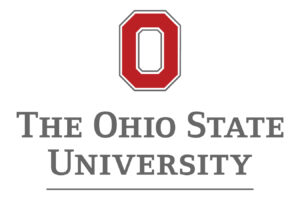
The Ohio State University — Columbus
- Columbus, OH
Academic Highlights: There are 200+ undergraduate majors and 18 schools and colleges housed within OSU. Business sees the greatest percentage of degrees conferred at 18% followed by engineering (15%), health professions (10%), and the social sciences (9%). It makes sense that so many flock to the business and engineering schools as they are among the highest-rated undergraduate programs in their respective disciplines. 40% of sections enroll fewer than 20 students, and approximately 20% of students gain research experience.
Professional Outcomes: Upon receiving their diplomas, 56% of Class of 2022 graduates were entering the world of employment while 17% were already accepted into graduate or professional school. Hordes of Buckeyes can be found at many of the nation’s leading companies. More than 2,000 alumni work for JPMorgan Chase, more than 1,000 are employed by Amazon, and more than 600 work for Google and Microsoft. Of the grads who directly matriculate into graduate or professional school, many continue in one of OSU’s own programs.
- Enrollment: 45,728 (undergraduate); 14,318 (graduate)
- Cost of Attendance: $27,241 (in-state); $52,747 (out-of-state)
- Median SAT: 1340-1450
- Median ACT: 29-32
- Acceptance Rate: 53%
- Retention Rate: 94%
- Graduation Rate: 88%
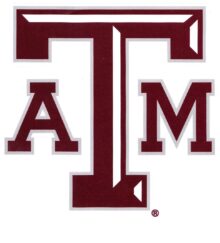
Texas A&M University — College Station
- College Station, TX
Academic Highlights: With nineteen schools and colleges and 130+ undergraduate degree programs, Texas A&M is a massive operation. As the name implies, there is a heavy emphasis on agriculture, engineering, and business, which all place well in national rankings and garner deep respect from major corporations and graduate/professional schools. Class sizes trend large, but 24% of courses enroll fewer than 20 students and personal connections with professors are entirely possible, particularly through the research-oriented LAUNCH program.
Professional Outcomes: On graduation day, 54% of students had already received at least one job offer and 22% were heading to graduate/professional school. Many Aggies go on to work at major oil, tech, and consulting firms; more than 500 are employed at each of ExxonMobil, Halliburton, Chevron, EY, Amazon, Microsoft, Intel, Accenture, and PWC. Starting salaries were strong—on average, College of Engineering grads made $80k and College of Agriculture & Life Sciences grads netted $54k. A&M is also the eighth-largest producer of law students in the entire country.
- Enrollment: 57,512 (undergraduate); 16,502 (graduate)
- Cost of Attendance: $31,058 (in-state); $59,336 (out-of-state)
- Median SAT: 1270
- Median ACT: 28
- Acceptance Rate: 63%
- Retention Rate: 95%
- Graduation Rate: 84%
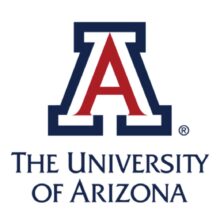
University of Arizona
- Tucson, AZ
Academic Highlights: UArizona undergrads can choose from over 150 majors, and business/marketing (15%) is the most popular choice with more degrees conferred than any other discipline. Other common pursuits include biology (9%), health professions (9%), and engineering (7%). Majors within business, engineering, and the geosciences all have excellent national reputations. A 15:1 student-to-faculty ratio leads to a mix of class sizes with 33% of classes having an enrollment of under 20 and only 15% possessing 50 or more students.
Professional Outcomes: In recent years, some of the top employers hiring Arizona grads have been Raytheon, Vanguard, PepsiCo, Amazon, KPMG, Goldman Sachs, Intel, Lockheed Martin, Nordstrom, and Texas Instruments, and an astonishing 92% of employers rate Wildcats as coming to their first job with the skills needed to succeed. Recent College of Management grads enjoy a starting salary in excess of $60k, while College of Engineering grads have an average starting salary of $74,000. Many who go on to pursue advanced degrees ultimately do so at UArizona itself.
- Enrollment: 40,407 (undergraduate); 10,727 (graduate)
- Cost of Attendance: $35,496 (in-state); $62,896 (out-of-state)
- Median SAT: 1240
- Median ACT: 25
- Acceptance Rate: 87%
- Retention Rate: 86%
- Graduation Rate: 68%
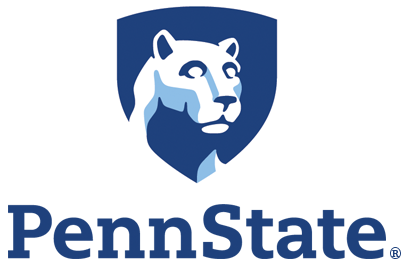
Pennsylvania State University — University Park
- State College, PA
Academic Highlights: Penn State offers 275 majors and a number of top-ranked programs in a host of disciplines. The College of Engineering is rated exceptionally well on a national scale and is also the most popular field of study, accounting for 15% of the degrees conferred. The Smeal College of Business is equally well-regarded, earning high rankings in everything from supply chain management to accounting to marketing. It attracts 15% of total degree-seekers. 61% of classes have an enrollment below thirty students.
Professional Outcomes: By graduation, 70% of Nittany Lions have found their next employment or graduate school home. 98% of College of Business grads are successful within three months of exiting, flocking in large numbers to stellar finance, accounting, consulting, and technology firms. Hundreds of alumni work at Citi, Salesforce, and Meta, and more than 500 currently work at each of IBM, Deloitte, PwC, Amazon, EY, JPMorgan Chase, Microsoft, Google, and Oracle. 75% of 2022 grads employed full-time earned starting salaries greater than $50k.
- Enrollment: 41,745 (undergraduate); 7,020 (graduate)
- Cost of Attendance: $32,656 (in-state); $52,610 (out-of-state)
- Median SAT: 1300
- Median ACT: 29
- Acceptance Rate: 55%
- Retention Rate: 91%
- Graduation Rate: 85%

University of Massachusetts Amherst
- Amherst, MA
Academic Highlights: 110 majors are offered across eight undergraduate colleges, including the highly ranked Isenberg School of Management. Programs in sports management, architecture, computer science, and nursing are top-rated. Of all degrees conferred in 2022, business/marketing diplomas accounted for 14%, followed by biology (11%), social sciences (10%), psychology (8%), health professions (7%), engineering (7%), and computer science (7%). 47% of courses enroll fewer than 20 students, and 30% engage in undergraduate research.
Professional Outcomes: Six months after graduating, 65% of newly minted 2022 grads were employed full-time and 26% were attending graduate school part-time. The most populated industries are health/medical professions (13%), internet & software (10%), biotech & life sciences (4%), and higher education (4%). Companies presently employing 100+ Minutemen and Minutewomen include Oracle, Mass Mutual, Amazon, IBM, Google, Intel, Microsoft, PwC, Wayfair, and Apple. Boston is the most popular landing spot for graduates.
- Enrollment: 23,936 (undergraduate); 7,874 (graduate)
- Cost of Attendance: $37,219 (in-state); $59,896 (out-of-state)
- Median SAT: 1380
- Median ACT: 31
- Acceptance Rate: 58%
- Retention Rate: 91%
- Graduation Rate: 83%

Cal Poly San Luis Obispo
- San Luis Obispo
Academic Highlights: Across all divisions, there are 60+ majors and 80+ minors offered. The majority of courses–59%–fall between twenty and forty students. Cal Poly’s student-to-faculty ratio is a high 18:1, but such is the cost of an uber-affordable STEM degree from an excellent institution. Over one-quarter of all degrees conferred (22%) are in engineering, and Cal Poly gets recognition in many specialty areas of the field including industrial engineering, mechanical engineering, aerospace engineering, computer engineering, and civil engineering.
Professional Outcomes: Within nine months of graduating, 91% of graduates are “positively engaged” in their next life activity. Top employers of Cal Poly grads include many of the top tech, consulting, engineering, and financial firms in the country such as Google, Deloitte, KPMG, Microsoft, Northrop Grumman, Adobe, EY, and Apple. Overall, grads enjoy a terrific median starting salary of $72,000. Of the 14% of alumni who directly enter graduate school, the six most commonly attended schools are all in California.
- Enrollment: 20,963
- Cost of Attendance: $32,000 (in-state); $53,000 (out-of-state)
- Median SAT: 1337
- Median ACT: 30
- Acceptance Rate: 30%
- Retention Rate: 94%
- Graduation Rate: 87%

San Diego State University
- San Diego, CA
Academic Highlights: SDSU has nearly 160 undergraduate majors, minors, and pre-professional programs. Classes tend to be on the large side—28% of course sections enroll more than 40 students, and only 31% of sections contain fewer than 20 students. Business/marketing accounts for 21% of the degrees conferred, making it the school’s most popular area of study. Next in line are engineering (9%), psychology (8%), and the social sciences (7%). Engineering and computer science majors tend to fare quite well in the booming local tech and startup scene.
Professional Outcomes: At the time of receiving their degrees, roughly 75% of newly minted SDSU graduates already have their next phase of life planned. 34% of recent grads had secured full-time employment, 21% were engaged in military service/volunteer work/part-time employment, and 17% were entering graduate or professional school. Qualcomm is the largest employer of Aztec alumni, and it is followed by Apple, Amazon, Google, and a number of other Silicon Valley-based tech companies.
- Enrollment: 31,724 (undergraduate); 4,913 (graduate)
- Cost of Attendance: $34,072 (in-state); $46,952 (out-of-state)
- Median SAT: Test Blind
- Median ACT: Test Blind
- Acceptance Rate: 39%
- Retention Rate: 89%
- Graduation Rate: 78%

Rutgers University — New Brunswick
- New Brunswick, NJ
Academic Highlights: Rutgers is divided into 17 schools and colleges, collectively offering 100+ undergraduate majors. 41% of class sections have an enrollment of nineteen or fewer students. The greatest number of degrees are conferred in business (20%), computer science (12%), engineering (10%), health professions (10%), biology (9%), and social sciences (7%). Rutgers Business School sends many majors to top Wall Street investment banks, and programs in computer science, public health, and criminal justice have a terrific national reputation.
Professional Outcomes: Upon graduation, 82% of Class of 2022 grads had secured a first job or were heading to an advanced degree program. 67% headed directly to the world of employment, where the companies hiring the largest number of grads included Amazon, Johnson & Johnson, L’Oréal, and JP Morgan Chase. Investment banks like Goldman Sachs and Citi also employ hundreds of alumni, as do companies like Verizon, Bristol-Meyers Squibb, Novartis, Pfizer, and Google. The median starting salary across all majors was $70,000.
- Enrollment: 36,344 (undergraduate); 14,293 (graduate)
- Cost of Attendance: $37,849 (in-state); $57,138 (out-of-state)
- Median SAT: 1370
- Median ACT: 31
- Acceptance Rate: 66%
- Retention Rate: 92%
- Graduation Rate: 84%

University of Vermont
- Burlington, VT
Academic Highlights: With over 100 majors and 100 advanced degree programs, the University of Vermont has offerings in just about any major you can name. They sport a student-to-faculty ratio of 19:1 and 41% of sections enroll no more than 19 students. The most popular majors are fairly evenly spread around with biology (12%), natural resources and conservation (10%), business (9%), and nursing (9%) all attracting similar numbers of undergraduates.
Professional Outcomes: Over the last three years, graduates have enjoyed a 94% success rate. Alumni earned an average starting salary of $49,909 during that span of time. Roughly 90% of grads stated that their current job was related to their career goals. Top employers included Mass General Hospital, Beta Technologies, and GlobalFoundries. Looking at the Class of 2022 who enrolled in advanced degree programs, common universities included Northeastern, BU, Simmons, NYU, and Cornell.
- Enrollment: 11,898
- Cost of Attendance: $32,834 (In-State); $59,278 (Out-of-State)
- Median SAT: 1350
- Median ACT: 30
- Acceptance Rate: 60%
- Retention Rate: 89%
- Graduation Rate: 76%
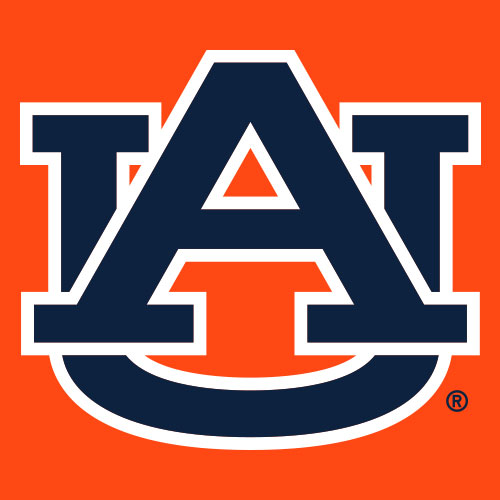
Auburn University
- Auburn, AL
Academic Highlights: The faculty-student ratio is 20:1, but only about 35% of classes enroll fewer than 20 students. Overall, undergraduates can choose from over 150 majors across 12 colleges, which include highly regarded business and engineering programs. Majors in architecture, apparel merchandising & design, and interior design receive high marks, as does nursing. In 2022, the greatest number of degrees conferred were in business (24%) followed by engineering (18%), biological/life sciences (10%), and health professions (6%).
Professional Outcomes: Within six months of graduating, 58% of the Class of 2022 were employed full-time, 23% had entered graduate programs. 59% were pursuing master’s degrees, 28% professional degrees, and 4% doctorates. In 2022, the average starting salary was $58,708; engineering graduates enjoyed the highest average starting salary ($71,656). At least ten recent grads can be found at each of Vanderbilt, Emory, Columbia, Georgia Tech, NYU, and Johns Hopkins.
- Enrollment: 25,379
- Cost of Attendance: $27,932 (in-state); $49,340 (out-of-state)
- Median SAT: 1320
- Median ACT: 28
- Acceptance Rate: 44%
- Retention Rate: 92%
- Graduation Rate: 81%
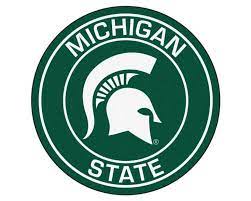
Michigan State University
- East Lansing, MI
Academic Highlights: This highly regarded state institution boasts over 200 programs—undergraduate, graduate, and professional—across 17 degree-granting colleges. A 17:1 student-to-faculty ratio rates in the average range for public universities of MSU’s size and scope. Class sizes are a genuine mix of small seminars and giant lecture halls. 16% of the degrees conferred in 2022 were in the business/marketing category. The next most common degrees were earned in communication/journalism (12%), engineering (11%), and the social sciences (8%).
Professional Outcomes: Within months of strutting across the graduation stage, 56% of Class of 2022 members had landed full-time employment, 27% were pursuing advanced degrees, and 6% were still looking for a job. The top employers of this group included big names like General Motors, Ford Motor Company, Deloitte, Epic Systems, Target, PepsiCo, and Microsoft. The median starting salary earned was $60,000. Among the grads schools favored by recent alumni are the University of Michigan, New York University, Columbia University, and Boston University.
- Enrollment: 39,201
- Cost of Attendance: $27,805 (In-State); $55,189 (Out-of-State)
- Median SAT: 1220
- Median ACT: 27
- Acceptance Rate:
- Retention Rate: 89%
- Graduation Rate: 82%

Kansas State University
- Manhattan, KS
Academic Highlights: K-State offers 250+ majors, minors, and certificates in a wide variety of academic disciplines. Impressively, this state university has 47% of sections enrolling fewer than 20 students; the student-to-faculty ratio is 18:1. 20% of all 2022 degrees were awarded in business, while agriculture (12%), engineering (11%), interdisciplinary studies (8%), and biology (7%) are also popular. The engineering program has a strong national reputation.
Professional Outcomes: Six months after graduation, 96% of K-State alumni are employed or pursuing further education. The most common employers for 2023 graduates were Koch Industries, Textron, the US Army, Garmin, Burns & McConnell. Thirty percent of grads enjoy a starting salary of more than $70,000 and 23% earn between $60k-$69k. Those attending graduate school primarily flocked to K-State, the University of Kansas, the University of Missouri, the University of Nebraska, and Wichita State University.
- Enrollment: 15,046
- Cost of Attendance: $23,896 (In-State); $40,368 (Out-of-State)
- Median SAT: 1220
- Median ACT: 23
- Acceptance Rate: 95%
- Retention Rate: 86%
- Graduation Rate: 69%
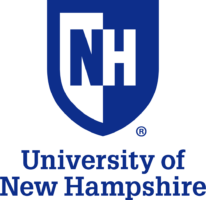
University of New Hampshire
- Durham, NH
Academic Highlights: UNH offers hundreds of programs across 11 schools and colleges, including the highly regarded Peter T. Paul C0llege of Business and Economics. There are also 50+ research centers and institutes. The most degrees are conferred in the following areas of study: business/management/marketing (21%), biological sciences (11%), engineering (10%), health professions (8%), and psychology (6%). The student-to-faculty ratio is 16:1, and 37% of classes enroll less than 20 students.
Professional Outcomes: 94% of the Class of 2022 experienced positive outcomes, with 77% employed and 17% continuing their education. 89% of those employed reported working in jobs related to their major. Across all majors, the average median starting salary was $57k. Top employers included UNH, BAE Systems, Wentworth-Douglass Hospital, Lonza Biologics, Liberty Mutual, Boston Children’s Hospital, Mass General, Ernst & Young, and General Dynamics. 48% of those continuing their education elected to stay at UNH.
- Enrollment: 11,387 (undergraduate); 2,292 (graduate)
- Cost of Attendance: $35,754 (in-state); $56,274 (out-of-state)
- Median SAT: 1220
- Median ACT: 29
- Acceptance Rate: 87%
- Retention Rate: 86%
- Graduation Rate: 77%

University of Connecticut
- Storrs, CT
Academic Highlights: UConn is home to fourteen schools and colleges as well as 115+ undergraduate majors. The four most commonly conferred undergraduate degrees are in business (15%), engineering (12%), the social sciences (12%), and health professions/nursing (12%). In terms of prestige and national reputation, programs in business, pharmacy, and nursing carry a good deal of weight. The school also does a nice job of creating a balance of classroom experiences—53% of sections enroll fewer than 20 students and only 18% contain more than fifty.
Professional Outcomes: 90% of the Class of 2022 experienced a positive outcome (job, grad school, military, volunteer position) within six months of earning their degrees. Among the 59% who found employment, the largest numbers landed at Aetna, Cigna, PwC, The Hartford, Travelers, and Raytheon Technologies; the median starting salary was $62,400. Massive numbers of alumni are employed by Pratt & Whitney, Pfizer, IBM, and Deloitte. 30% of 2022 graduates immediately entered a graduate or professional program, with many choosing to stay at UConn.
- Enrollment: 18,983 (undergraduate); 8,020 (graduate)
- Cost of Attendance: $41,606 (in-state); $64,478 (out-of-state)
- Median SAT: 1340
- Median ACT: 30
- Acceptance Rate: 55%
- Retention Rate: 91%
- Graduation Rate: 83%

George Washington University
- Washington, D.C.
Academic Highlights: GW undergraduates choose from 75+ majors spread across nine colleges. The school’s 12:1 student-to-faculty ratio translates to a mix of small, medium, and large undergraduate sections. Twelve percent of courses have single-digit enrollments, 10% have over 50 students, and the majority fall in the 10 to 29 range. The social sciences (31%) are the area in which the greatest number of degrees are awarded followed by health professions (17%), business (15%), biology (5%), and computer science (5%).
Professional Outcomes: Within six months of leaving GW, 96% of the Class of 2022 had found their way to gainful employment or graduate school while 4% were still job hunting. Of the 68% of grads already in the workplace, 68% were in a for-profit industry, 25% had entered a nonprofit position, and 8% were working in government. A healthy 27% of those earning their diplomas in 2022 immediately turned their attention to earning an advanced degree. Among that group were 76% seeking master’s degrees, 11% entering law school, 5% pursuing a medical degree, and 3% entering a doctoral program.
- Enrollment: 11,482
- Cost of Attendance: $85,740
- Median SAT: 1410
- Median ACT: 32
- Acceptance Rate: 49%
- Retention Rate: 90%
- Graduation Rate: 85%

Virginia Polytechnic Institute and State University
- Blacksburg, VA
Academic Highlights: Eight undergraduate colleges that offer 110+ distinct bachelor’s degrees are housed within Virginia Tech. 33% of sections contain fewer than 20 students, and 21% of recent graduates report participating in some type of undergraduate research experience. Engineering is the area where the greatest number of degrees are conferred (23%), but business (20%) is a close second. Both disciplines are among the most respected at Tech, along with computer science. Other popular majors include the family and consumer sciences (8%), social sciences (8%), biology (8%), and agriculture (4%).
Professional Outcomes: Within six months of graduating, 56% of the Class of 2022 were employed and 18% were in graduate school. One recent class sent large numbers to major corporations that included Deloitte (67), KPMG (44), Lockheed Martin (39), Capital One (30), EY (28), Booz Allen Hamilton (18), and Northrop Grumman (12). The median salary for 2022 graduates was $67,000. Among recent grads who decided to pursue an advanced degree, the greatest number stayed at VT, while others enrolled at Virginia Commonwealth University, George Mason University, William & Mary, Columbia, Duke, and Georgia Tech.
- Enrollment: 30,434 (undergraduate); 7,736 (graduate)
- Cost of Attendance: $37,252 (in-state); $58,750 (out-of-state)
- Median SAT: 1330
- Median ACT: 29
- Acceptance Rate: 57%
- Retention Rate: 91%
- Graduation Rate: 87%

University of Pittsburgh
- Pittsburgh, PA
Academic Highlights: Pitt admits freshmen to the Dietrich School of Arts & Sciences, the College of Business Administration, the Swanson School of Engineering, and the School of Nursing. Pitt’s engineering and business schools are top-rated and among the most commonly chosen fields of study. Premed offerings are also top-notch, with majors in the health professions (12%), biology (11%), psychology (9%), and computer science (9%) rounding out the list of most popular majors. Pitt has a strong 13:1 student-to-faculty ratio; 42% of sections have an enrollment of under twenty students.
Professional Outcomes: Within a few months of graduating, 94% of 2022 grads entered full-time employment or full-time graduate or professional school. Engineering, nursing, business, and information sciences majors had 73-86% employment rates while other majors tended to flock to graduate school in large numbers. Employers scooping up the highest number of grads in one recent year included the University of Pittsburgh Medical Center (170), PNC (57), BNY Mellon (36), and Deloitte (19). Median starting salaries fluctuated between $37k-65k depending on major.
- Enrollment: 20,220 (undergraduate); 9,268 (graduate)
- Cost of Attendance: $38,034-$43,254 (in-state); $56,400-$66,840 (out-of-state)
- Median SAT: 1360
- Median ACT: 31
- Acceptance Rate: 50%
- Retention Rate: 92%
- Graduation Rate: 84%

Brigham Young University
- Provo, UT
Academic Highlights: Thirteen percent of sections contain more than fifty students. However, those lecture hall courses are balanced with classes of more modest size; 47% of courses have nineteen or fewer students. The areas where the most degrees were conferred in 2022 were business (14%), biology (12%), engineering (8%), health professions (7%), and the social sciences (7%). The programs with the strongest national reputations are those within the Marriott School of Business and, to a slightly lesser extent, the Ira A. Fulton College of Engineering.
Professional Outcomes: By a wide margin, the two largest employers of BYU alums are the university itself and the LDS Church. However, there are hundreds of Cougars working at major corporations including Adobe, Google, Microsoft, and Goldman Sachs. The median salary of a 2022 grad was $62,500. Brigham Young is in the same league with Berkeley, Cornell, the University of Michigan, and the University of Wisconsin in terms of producing future PhDs. Over the past decade, more than 3,000 alumni have gone on to earn doctoral degrees.
- Enrollment: 34,401
- Cost of Attendance: $23,052 (in-state); $38,076 (out-of-state)
- Median SAT: 1360
- Median ACT: 30
- Acceptance Rate: 67%
- Retention Rate: 90%
- Graduation Rate: 78%

Purdue University — West Lafayette
- West Lafayette, IN
Academic Highlights: Purdue offers over 200 majors at ten discipline-specific colleges, and 38% of course sections have an enrollment of 19 or fewer. Engineering and engineering technologies majors earn 34% of the degrees conferred by the university; the College of Engineering cracks the top ten on almost every list of best engineering schools. The Krannert School of Management is also well-regarded by employers; 11% of degrees conferred are in business. Other popular majors include computer science (10%) and agriculture (5%)—both are incredibly strong.
Professional Outcomes: Shortly after receiving their diplomas, 70% of 2022 grads headed to the world of employment while 24% headed to graduate/professional school. The top industries entered by grads in recent years are (1) health care, pharmaceuticals, and medical devices; (2) finance, insurance, and consulting; (3) manufacturing and machinery; (4) airline, aviation, and aerospace. Companies employing the greatest number of recent alumni were Amazon, Deloitte, PepsiCo, Labcorp, Lockheed Martin, and Microsoft. The average starting salary was $68k across all degree programs.
- Enrollment: 37,949 (undergraduate); 12,935 (graduate)
- Cost of Attendance: $22,812 (in-state); $41,614 (out-of-state)
- Median SAT: 1330
- Median ACT: 31
- Acceptance Rate: 53%
- Retention Rate: 91%
- Graduation Rate: 84%

Texas Christian University
- Forth Worth, TX
Academic Highlights: TCU offers 116 undergraduate majors. The most popular are housed in the Neely School of Business, including the highly-rated BBA in Entrepreneurship. 27% of all degrees conferred in 2022 fell under the business umbrella. The engineering program is also well-regarded. Other commonly conferred degrees include communications/journalism (15%), health professions (11%), and the social sciences (9%). 39% of its class sections have 20 or fewer students, and only 5% of courses seat more than 50.
Professional Outcomes: Upon graduating, 48% of recent diploma-earners were employed and 18% had their graduate school placement lined up. American Airlines, Deloitte, IBM, Lockheed Martin, and Medical City Hospitals employ the greatest number of recent alumni. Other companies with a large TCU presence include Microsoft, CBRE, Goldman Sachs, and AT&T. The most recent median starting salary was $58,900. For those who enrolled in an advanced degree program, the most commonly pursued areas of study were medicine/health (27%), business (21%), and psychology (13%).
- Enrollment: 10,523 (undergraduate); 1,750 (graduate)
- Cost of Attendance: $85,051
- Median SAT: 1260
- Median ACT: 28
- Acceptance Rate: 56%
- Retention Rate: 92%
- Graduation Rate: 83%
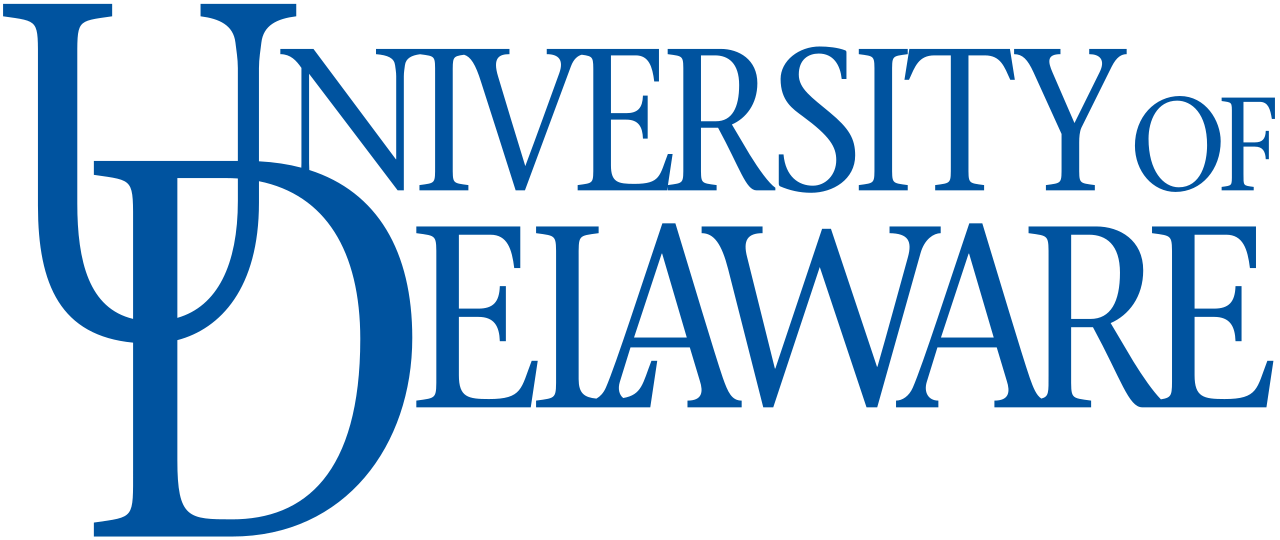
University of Delaware
- Newark, DE
Academic Highlights: The University of Delaware offers 150 bachelor’s degree programs. Nearly one-third of students pursue a degree in either business (21%) or engineering (9%), two of the school’s highest-ranked departments. Nursing is popular, with 11% of degrees conferred being in the health professions. Other frequently pursued majors include the social sciences (10%), biology (7%), and education (5%). 62% of courses enroll fewer than 30 students. The university also has the oldest study abroad program in the nation, with 30% of undergrads participating.
Professional Outcomes: 94% of Class of 2022 grads quickly found their next destination. 66% were employed, with 74% taking jobs at for-profit companies, 16% at nonprofits, 7% in K-12 education, and 4% with a government entity. The greatest number of newly minted alums were hired by JPMorgan Chase & Co., KPMG, EY, ChristianaCare, and Deloitte. The median starting salary for this cohort was $62,000. 28% immediately pursued an advanced degree, with 62% entering master’s programs, 20% entering a professional program, and 9% beginning a PhD.
- Enrollment: 18,066 (undergraduate); 4,557 (graduate)
- Cost of Attendance: $33,718 (undergraduate); $57,358 (graduate)
- Median SAT: 1280
- Median ACT: 29
- Acceptance Rate: 72%
- Retention Rate: 91%
- Graduation Rate: 82%

Saint Louis University
- St. Louis, MO
Academic Highlights: SLU offers nearly 100 undergraduate programs across 10 colleges and schools. It’s ranked highly for service learning, nursing, and business, particularly entrepreneurship, finance, and international business. By degrees conferred, the most popular areas of study are health professions (28%), business/management/marketing (17%), biological sciences (9%), and engineering (9%). The student-to-faculty ratio is just 8:1, and 90% of SLU faculty hold terminal degrees in their field.
Professional Outcomes: 94% of the Class of 2022 experienced positive outcomes, with 50% employed and 44% continuing their education. The most popular sector for recent grads was healthcare followed by higher education, aerospace, management consulting, and accounting. The average starting salary is $56k; top employers include BJC Healthcare, Boeing, Mercy, SSM Health, Saint Louis University, and Deloitte. For those who continued on to grad school, SLU itself was the most popular destination followed by Washington University in St. Louis.
- Enrollment: 8,502 (undergraduate); 6,702 (graduate)
- Cost of Attendance: $73,884
- Median SAT: 1290
- Median SAT: 29
- Acceptance Rate: 85%
- Retention Rate: 89%
- Graduation Rate: 80%

Cal Poly – Pomona
- Pomona, CA
Academic Highlights: Cal Poly Pomona is a massive institution with 1,076 faculty members at over 25,000 undergraduate students. The average size for an undergraduate class section is 32 students and the student-to-faculty ratio is 25:1. While a polytechnic institute, the most commonly conferred degree in 2022 was actually business (29%). Next up are engineering (18%), the social sciences (9%), science technologies (6%), and agriculture (4%).
Professional Outcomes: An excellent 91% of the Class of 2023 had already achieved positive outcomes within six months of leaving campus. The employers locking down the largest number of recent Cal Poly Pomona grads were Accenture, Bain & Company, Boston Consulting Group, Bloomberg, DraftKings, Meta, Morgan Stanley, NIH, Nike, PwC, and Tesla Motors. The graduate destinations of Class of 2023 members included Harvard, Brown, Duke, Stanford, Oxford, Yale, USC, UPenn, and Georgia Tech.
- Enrollment: 25,181
- Cost of Attendance: $29,226 (In-State); $41,406 (Out-of-State)
- Median SAT: N/A
- Median ACT: N/A
- Acceptance Rate: 55%
- Retention Rate: 87%
- Graduation Rate: 66%

Pepperdine University
- Malibu, CA
Academic Highlights: Pepperdine offers 46 majors and 47 minors with the most commonly conferred degrees being in business/marketing (29%), communication/journalism (17%), general social sciences (11%), psychology (8%), and parks and recreation (7%). Only 2% pursue degrees in religion, but its influence is interwoven into the academic experience. The Graziadio Business School has a strong reputation, as does the Communication Division. The average class contains 19 students, and 23% of courses contain fewer than 10.
Professional Outcomes: 86% of the Class of 2022 landed at their next destination within six months, with 63% employed full-time, 18% admitted to graduate school, and 1% in a full-time service or military role. Of those employed, 87% were in the for-profit sector, 12% were with nonprofit/government entities, and 1% were pursuing entrepreneurial ventures. Disney, Morgan Stanley, Northrop Grumman, and Wells Fargo have hired the most recent grads. Other companies employing fifty or more alumni include Kaiser Permanente, Apple, Google, and Amazon.
- Enrollment: 3,682 (undergraduate); 6,368 (graduate)
- Cost of Attendance: $93,578
- Median SAT: 1390
- Median ACT: 31
- Acceptance Rate: 49%
- Retention Rate: 88%
- Graduation Rate: 84%

Louisiana State University
- Baton Rouge, LA
Academic Highlights: LSU offers 330 academic majors and minors which covers virtually every academic subject on the face of the earth. With a 20:1 student-to-faculty ratio, the school is able to offer 44% of class sections in a setting of no more than 19 students. By far, the most commonly conferred degree is in the area of business (23%). The next most popular are engineering (11%), education (9%), biology (8%), and journalism (7%).
Professional Outcomes: A solid 83% of 2022 and 2023 graduates reported a positive outcome after receiving their diplomas. The average salary for those employed was $55,240 and companies hiring the most LSU alums were Deloitte, EY, IBM, Chevron, MMR Constructors, and the Walt Disney Company. For those headed to graduate school, the most frequently studied disciplines were law, business administration, medical school, accounting, and social work.
- Enrollment: 30,952
- Cost of Attendance: $26,650 (In-State); $43,327 (Out-of-State)
- Median SAT: 1225
- Median ACT: 25
- Acceptance Rate: 76%
- Retention Rate: 84%
- Graduation Rate: 70%

Syracuse University
- Syracuse, NY
Academic Highlights: In total, 200+ majors and 100+ minors are spread across ten undergraduate schools/colleges. The School of Architecture, the Maxwell School of Citizenship and Public Affairs, and the Newhouse School of Public Communication are all revered names that carry a good deal of weight in their respective fields. The most popular majors include communication/journalism (15%), the social sciences (14%), and business (12%). Despite Syracuse’s size, class sizes are kept reasonably low; 63% contain 20 students or fewer.
Professional Outcomes: Six months after exiting the Carrier Dome for the final time in 2022, 59% of Orangemen and women found employment (92% related to their career goals) and 21% continued to graduate school. The companies employing the most ‘Cuse grads include major media/entertainment management companies like Conde Nast, Bloomberg, and Creative Artists Agency as well as big-name corporations like GE, KPMG, EY, Lockheed Martin, and Morgan Stanley. The average starting salary for 2022 grads was a solid $63k.
- Enrollment: 15,739 (undergraduate); 7,209 (graduate)
- Cost of Attendance: $85,214
- Median SAT: 1340
- Median ACT: 30
- Acceptance Rate: 43%
- Retention Rate: 91%
- Graduation Rate: 81%
We hope you have found our list of the Best Colleges for Nutrition to be useful and informative as you continue your college search process. We also invite you to check out some of our other resources and tools including:
- AP Score Calculators
- SAT Score Calculator
- ACT Score Calculator
- Best Summer Programs
- College List Building Tool


